The National Lena Pillars Nature Park is a unique paleo-geological and biotic complex
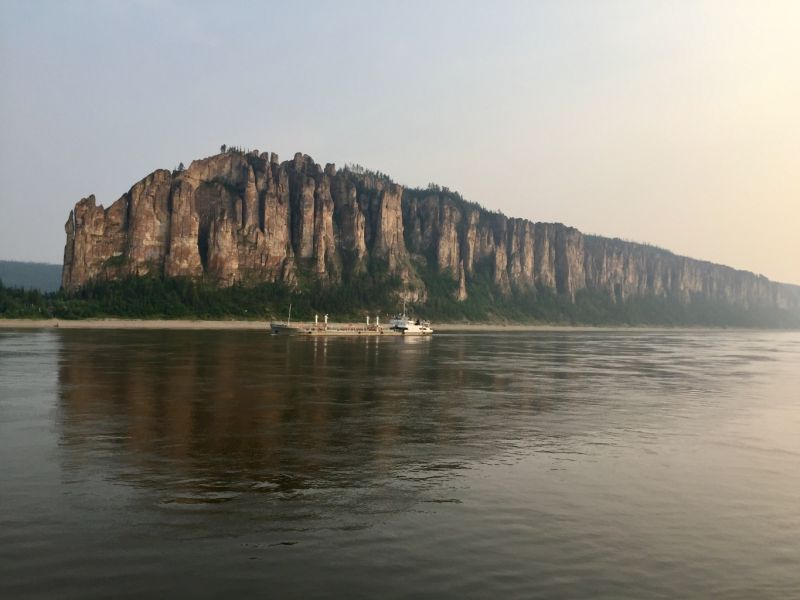
The National Lena Pillars Nature Park is a unique paleo-geological and biotic complex, its formation began over 540 mn years ago. This complex of vertically elongated rocks resembling Gothic towers stretches for many kilometres along the banks of the magnificent Lena River.
Arkady Semyonov, Director of the National Lena Pillars Nature Park told about the pearl of the Yakut nature and the first Yakutia’s national park, about the ecotourism in the Republic, specially protected natural areas and their network expansion.

- When did the Lena Pillars gain real interest of tourists? - The unique beauty of this place has been known for a long time.
"A kind of sacred silence lies on the virgin creation, and the soul merges with the wild, but majestic nature,” - Decembrist A. Bestuzhev-Marlinsky
- These are remote areas, so the Lena Pillars (Aan Aiylgy), of course, were not so widely known, and few people visited them. And they became a tourist attraction only in the Soviet times, when motor ships with tourists appeared on the Lena River - it was to the Lena Pillars that the 3-day river cruises from Yakutsk, the capital of the Republic, were organized. On the first day of sailing, the tourists enjoyed the beauties of nature, river and rocky shores from the deck, the next day they spent among this beauty, ‘pristine wilderness’, and sailed back to the ‘civilization’ in the evening. Of course, some daredevils and athletes climbed up the rocks, but then it was not as safe as it is now.
- When did the Lena Pillars become a specially protected natural area?
- After the collapse of the USSR “In order to preserve the biological diversity and sustainable development of the Yakutia’s nature and in the interests of the future generations”, the Resolution of the President of the Republic of Sakha (Yakutia) dated August 16, 1994 “On the measures for the development of specially protected areas” was issued where a forward looking action plan for the development of the system of specially protected natural areas was approved. In 1995, a resolution of the Yakut government "On the organization of the National Lena Pillars Nature Park in the territory of the Khangalass and Olekminsk uluses” (districts) was issued. Thus, February 10, 1995 is the official date for the establishment of the National Lena Pillars Nature Park. The Natural Park belonged to the Ministry of Ecology, Nature Management and Forestry of the Republic of Sakha (Yakutia), which recently celebrated its 25th anniversary. Since 2018, the Park is subordinated to the Ministry of Natural Resources of the Russian Federation.
The Lena Pillars are rock formations, their height reaches 220 metres above the river level, they are composed of Cambrian limestones. In tectonic terms, the Lena Pillars lie within the Siberian Platform. The beginning of the formation of the rocks that resulted in this natural monument is usually dated to the early Cambrian period, i.e. 560-540 million years ago. The formation of the Lena Pillars as a topographic landform goes back to about 400 thousand years ago, a relatively recent geological time. The territory of the Siberian Platform underwent a gradual uplift, which led to fracturing and displacement that produced faults, the formation of deep river valleys - and to the formation of fantastic rocks composed of сarbonates.
In 2012, the Lena Pillars were registered in the UNESCO World Heritage List. With this status, the interest in these places has increased markedly not only from the local, but also from the international community. The Lena Pillars have the status of a Russia’s national park. Today, its area is 1,353 thousand hectares. The Park consists of two branches - Pillars and the Sinsk Branch. So far, this is the only federal national park in the Republic of Sakha (Yakutia). The protected areas are the pride and heritage of Yakutia. There are projects being implemented to conserve and expand the biological diversity. And at present, work is underway to upgrade the status of the Kytalyk State Nature Reserve to make it the National Park.
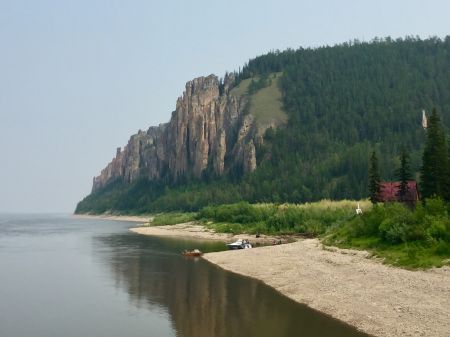
- Please tell us about the unique character of this place - from a historical point of view.
- The Lena Pillars Nature Park (Aan Aiylgy) is a unique natural wonder, with a wide range of different landscapes of stunning beauty and of world-wide scientific value. In addition to the well-known stone ‘pillars’, there are wind-blown sand dunes, toukulans, in the Park with separate sections of a cold northern sandy desert. Aan Aiylgy is also of paleontological value. In the Park, there are so-called ‘Lagerstätte’ - places with special preservation of skeletal and non-skeletal organisms. In addition to our Pillars, there are two more such places in the world - in Canada and China.
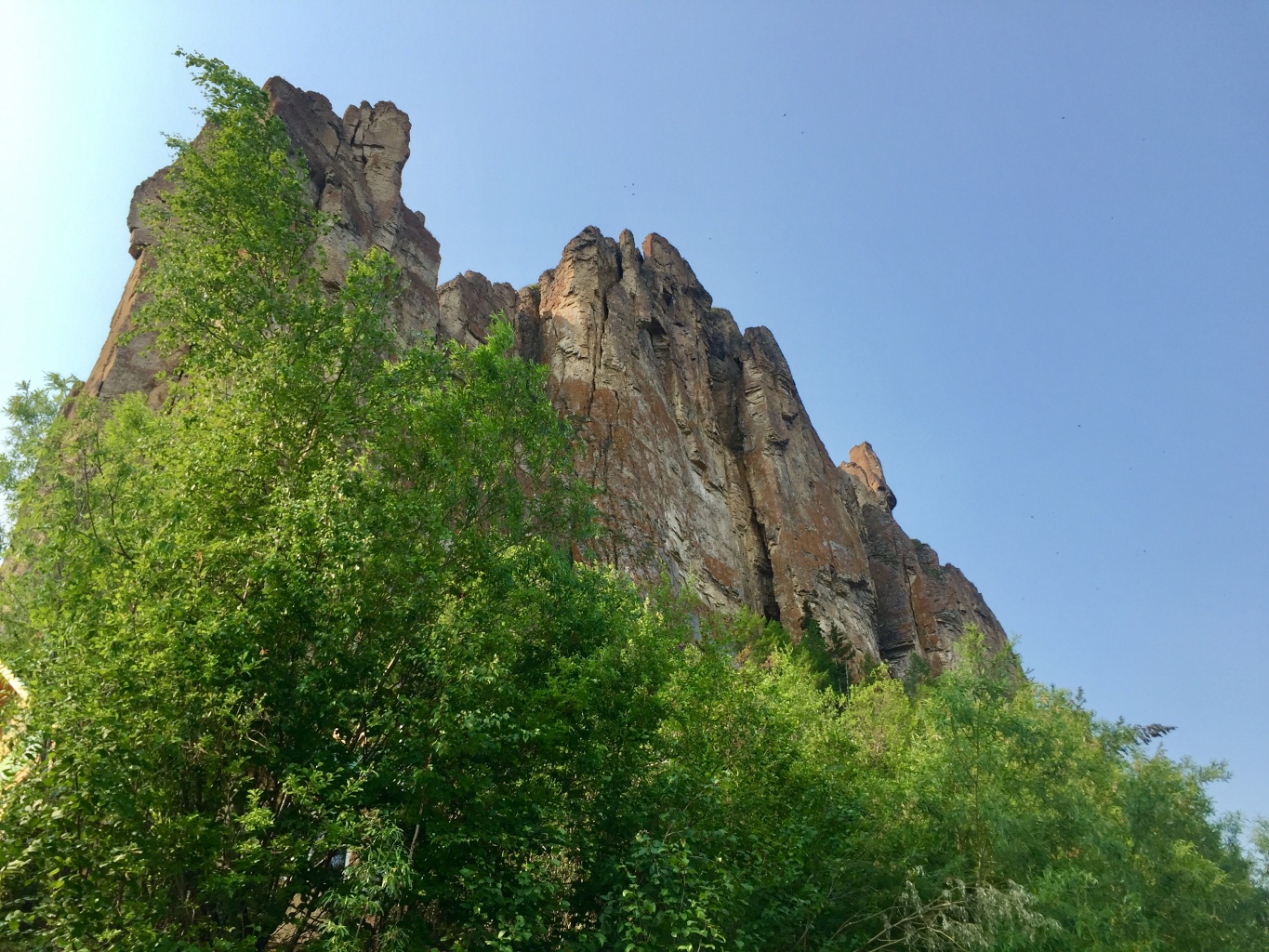
The first studies of the Lena Pillars by paleontologists with finds of trilobite shell fragments began in the 1940s. The most interesting and developed inhabitants of the ancient bottom were the Cambrian trilobites, an extinct class of marine arthropods, which was of great importance for the fauna of the Paleozoic formations of the world. The approximate age of trilobites found in the area of the Lena Pillars is over 540 million years. At the mouth of the Diring-Yuryakh River, there is an ancient encampment, and the stone tools and burials of the Late Neolithic era were found (2d millennium B.C.) during the excavations of the site. There are unique permafrost ecosystems in the Lena Pillars. In the vicinity of the Park, the fossils of the ancient fauna representatives were found - mammoths, buffaloes, woolly rhinoceros and others.
- What other unique living fauna is there - and flora, too?
- There are 38 species of mammals in the Park, the ichthyofauna of the Park consists of 23 forms and includes all the species that live in the Central Yakutsk region. 745 species are in the list of entomofauna. The conditional northern border of the habitat of the viper and the viviparous lizard passes through the territory of the Park. In the Park, there are also over 100 bird species - gray cranes, peregrine falcons, golden eagles, white owls, ospreys, black grouse, capercaillies and others. 470 plant species grow in the Park, including 21 species of rare and endangered Red Book plants. Of particular interest is the ‘Redowskia sophiifolia’, a narrow-local endemic of the Lena Pillars and a very rare specie listed in the Red Book.
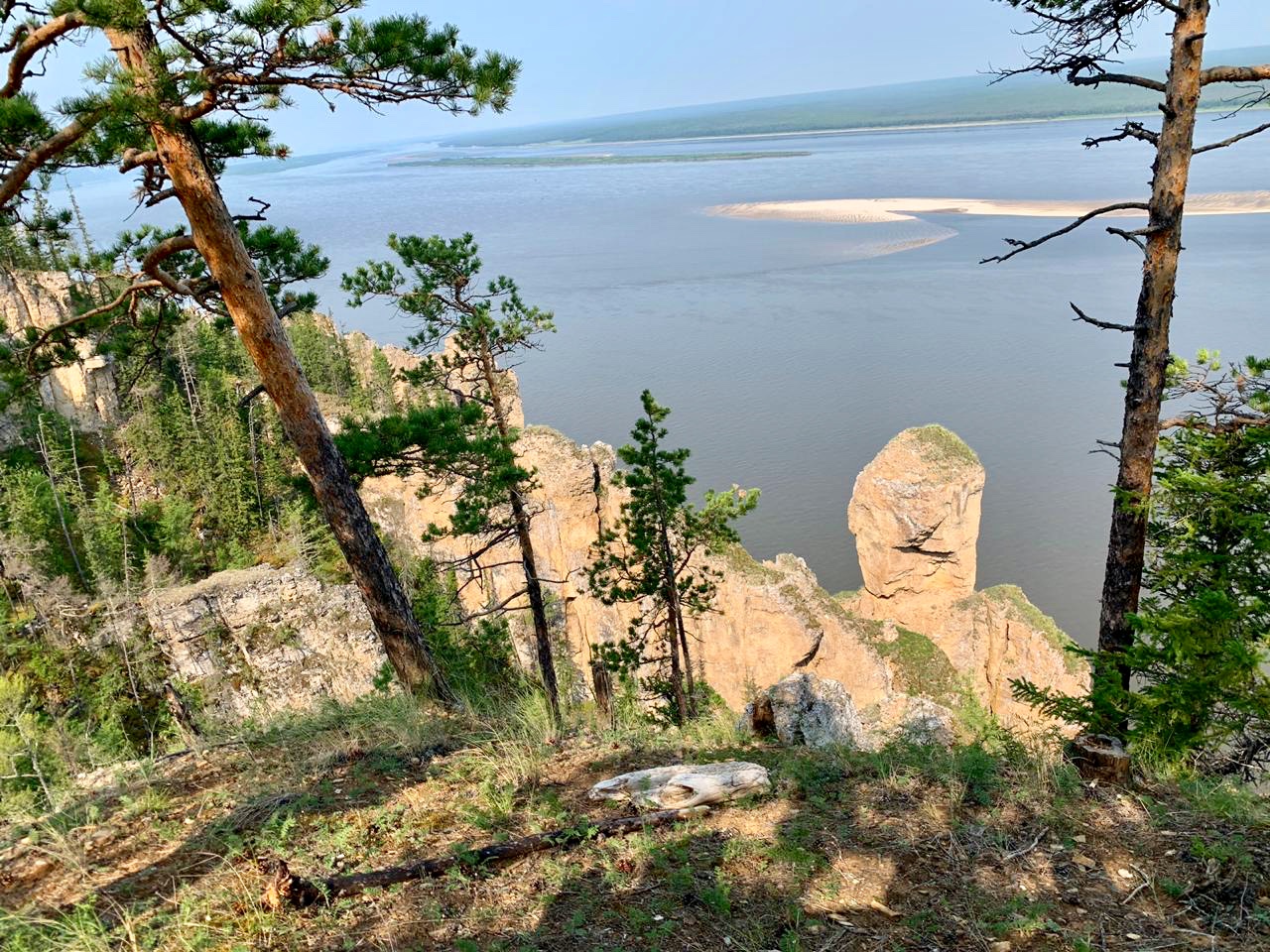
- By the way, you have a buffalo reserve there – with live buffaloes!
- Yes, once in ancient times, buffaloes lived in Yakutia, which were mainly extirpated. But not all…. Some of them went to Canada through Alaska, where they survived. The idea has come up to bring them back to us, to their historical home and to settle them here again. To do this, 30 buffaloes were brought from Canada and a reserve was established. The buffaloes liked it here, and they began to breed successfully. At present, two buffalo groups, 30 individuals each, have already been released into the natural environment, and their total number is over 200. Someday, they will also be released into wildlife, where they will graze and reproduce. In the Republic, a wood buffalo is included in the list of objects of the Animal World of the Yakutia’s Red Book.
- The Nature Park cooperates with various specialists - historians, biologists, zoologists. Tell us about the scientific aspect.
- We have a long-standing co-operation agreement with the Permafrost Institute named after P. I. Melnikov, the Siberian Branch of the Russian Academy of Sciences. This agreement has recently been extended. A group of scientists regularly visits Diring-Yuryakh excavation sites and the largest northern sandy desert, Saamys Kumaga Tukulan, to study natural exposures, take samples of mine workings, and so on. A research expedition of schoolchildren ‘Elleiyada’ was conducted, led by the famous local history expert Prokopiy Nogovitsyn: it worked on the right bank of the Lena River, where the bank of ‘marble’ archaeocyatha is located (this is a class of extinct sponges).
- What kind of people work in the Park, who are they, where are they from?
- The members of the team are professionals, everyone knows his/her work, and most important is that they love it - after all, you can’t do without this: to protect nature, probably, you need to love it. The staff of the National Park is large - 63 persons. In addition, annually during the tourist season we invite additional 20 people - guides, volunteers, etc. We can be proud of the people who work here: from the first director of the Park - she is the honored ecologist of Russia, Lyubov Kipriyanova, who now works with us to help with her advice - to the guards, these are well-known, respected people in the district, so no incidents or wrongdoings happen in our Park.
- You hold historical and cultural rituals for tourists on the shore. What traditions - old and new - are there in the reserve?
- On the shore, ‘Algys’, a rite of purification and blessing is held in a special place - it is customary for the Yakuts to make friends with the local spirits of the Nature. There is an ‘urasa’, a hut made of poles, where you can be in silence, meditate, feel part of this world, be alone with yourself and the Nature. Among other things, in the evening, the guests of the reserve arrived here by motor ships are treated to captain's fish soup on the shore. This is not our ritual, but it is carried out in the Park and is included in the tour programmes: the ship’s crew, as a rule, get fish - you know, the Lena River is famous for its fish - then fresh and delicious fish soup is cooked and served to guests as part of the local attractions.
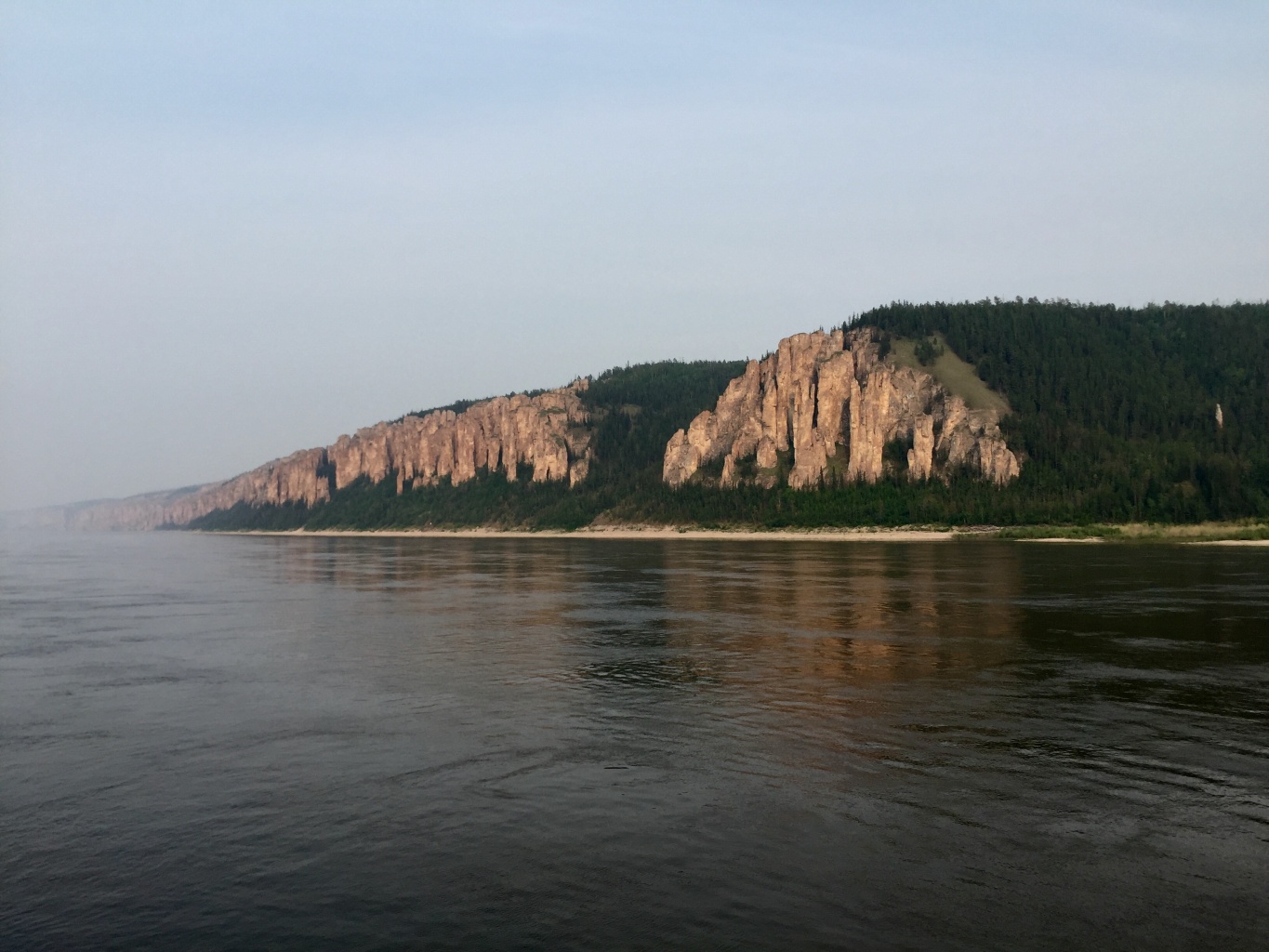
- It seems that now swimming in the river is not allowed. When I was at the Lena Pillars this summer, I could not swim. It's a pity, because the Lena attracts tourists from all over the world - such a great temptation to swim in the Lena water, and not everyone will still have a chance to do it. What is the reason for this?
- A ban on swimming does exist, but this is, first and foremost, a necessary measure; we cannot maintain and organize a beach or a swimming zone. In addition, this is rather costly, this is not part of our functions, because our main task is to preserve a unique natural area. There are individual entrepreneurs for this purpose, and we are ready to work and co-operate with them in this field.
- How is the Nature Park financed and what are the funds used for? Are there any additional revenues from tourists?
- As for financing: it is stipulated and included into the three-year budget, and funding is more than sufficient: firstly, in 2019, the Park will receive about ₽60 mn per year only for the fulfillment of the state task, then for purchasing the machinery and equipment and carrying out the cadastral work another ₽45 mn are foreseen; and additionally, as part of the state assignment, funds are provided for the forest management fieldwork - and this is ₽31 mn more. And all this is achieved thanks to the well-coordinated work and competent interaction of the Government of the Republic of Sakha (Yakutia) with the leadership of the Ministry of Natural Resources and Ecology of the Russian Federation. Within the framework of the national ‘Ecology’ project, work is underway to strengthen the material and technical resources of the departments of the Ministry of Ecology. This year, for the first time in many years, the Republic purchased 28 units of fire-fighting equipment - these are bulldozers, low roaders, and forest patrol equipment. A lot of work, but plans are bigger. However, much depends on ourselves: in recent years, the Park adopted a concept for a significant increase in the extrabudgetary funds. Really, the Park has the opportunity to earn money: this includes the providing of conditions for the development of ecotourism, new ecological paths, the provision of the related services, including that through the development of winter tours and organized rafting on the Buotama and Sinyaya rivers. And we will do our best to make our services better and will demand the same from all the entrepreneurs who work in the tourism sector in our Park. Now the Park earns on average about ₽4.5 - ₽5.0 mn annually - this, of course, is not much, but in case of the development of the appropriate infrastructure, construction of new guest-houses, visitor centres, the development and working out of new tours, and so on, we can significantly increase extra-budgetary resources. To do this, we have developed the National Park development strategy and are confident that we will be able to implement it.
- What are your future plans, what are the Park’s prospects?
- We are focused on the development of international tourism, and to develop this, we need an appropriate infrastructure; we have a territory, the investor, and most importantly, we are eager to work. A lot of tourists come to us, including those from abroad, but mainly our visitors are our local citizens, people of Yakutia. But we hope that soon there will be much more incoming tourists.

- What other places in Yakutia seem especially beautiful and attractive to you from the eco-tourism point of view?
- In Yakutia, there are a lot of unique and beautiful places, each is unique and beautiful in its own way: the Verkhoyansk Range, Momsk Nature Park, Oymyakon as the coldest place on the Earth, also called the Pole of Cold, and others. In the field of the development of ecological, extreme, scientific and educational tourism in Yakutia, there is something promising.
- Recently, in Yakutsk, within the framework of the Northern Forum on the Sustainable Development, a round table was held on the "Ecological Tourism and Specially Protected Natural Areas" to discuss the sustainable tourism in the Arctic territories, fostering an attitude of care towards nature, and the expansion of the network of the specially protected natural areas. What interesting happens in the Republic in the field of the specially protected natural areas?
- In 2013, three resource reserves of local importance were formed along the Arctic coast of the Republic of Sakha - now the entire Arctic coast of the Republic, 4,500 km, are under special protection. Work is underway to create the first Cambrian Geological Park in the Republic, which will include a network of geological cross-sections and natural sanctuaries of global importance in the Khangalass, Olekminsk and Aldan districts. According to the Concept of developing a system of specially protected natural areas of federal significance and within the framework of the ‘Ecology’ national project, work has begun on the creation of the ‘Bear Islands’ and ‘Big Tokko’ reserves, the National Kytalyk Park as well as the State Laptev Sea Natural Reserve.
- Why is the Nature Reserve attractive to you personally?
- I was born and raised in a ‘nasleg’, an agricultural community bordering the territory of the Park.
- Ah, so? They say that everyone’s personality is influenced by the landscape where he or she grew up ...
- I am sure, it is what it is. But regardless of this, these places are beautiful, and at any time of the year they are beautiful in their own way. Especially, in golden autumn!








